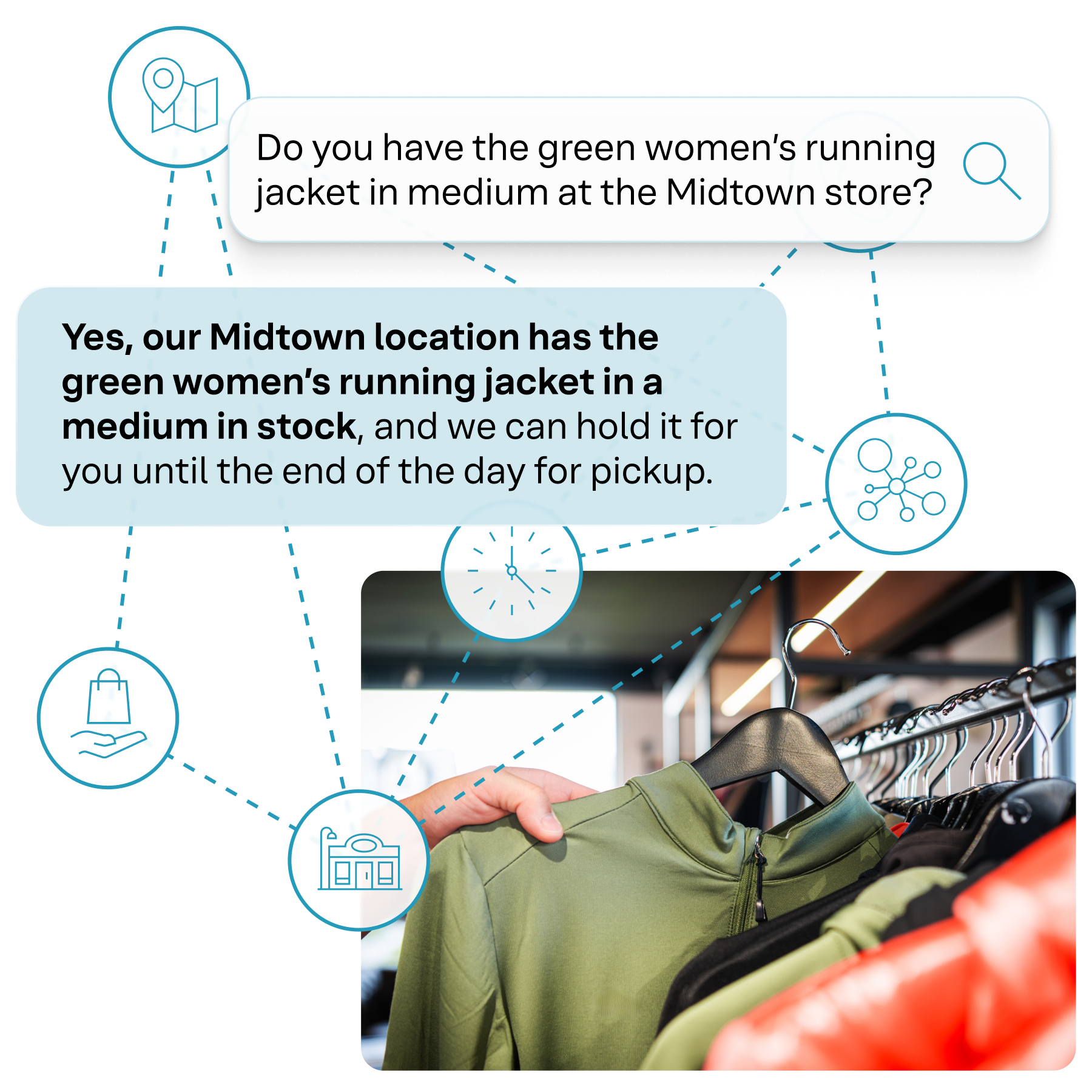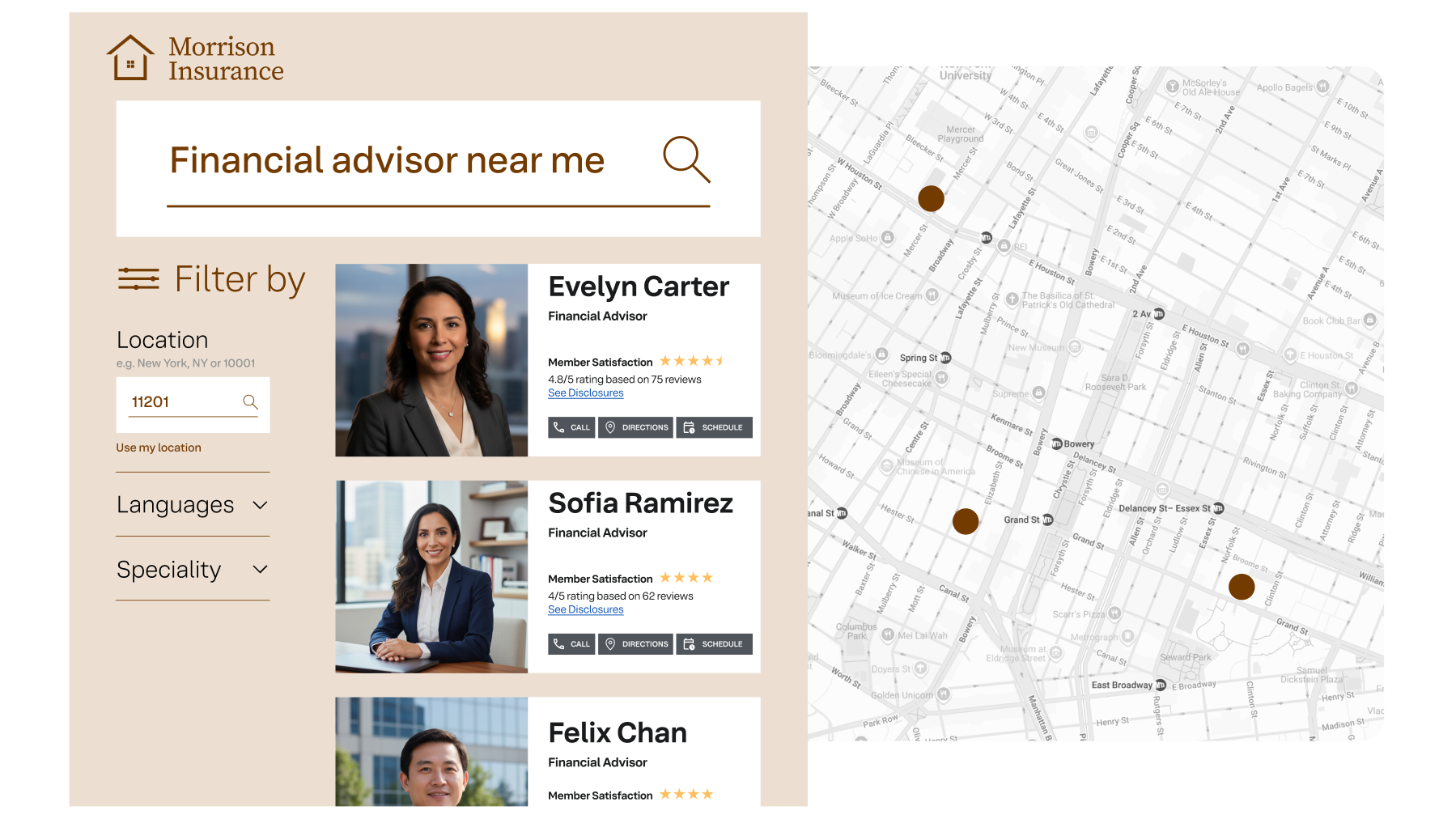Enterprise Search
Convert more customers with intelligent answers
Convert more customers with intelligent answers
Deliver an intelligent search experience that answers questions everywhere from one knowledge base.

Scale search experiences without the heavy lifting
Scale search experiences without the heavy lifting
Customer-Ready Knowledge
Centralize and structure content, so teams update search experiences instantly, without engineering bottlenecks.
Direct, Intelligent Answers
Deliver precise answers instead of links that resolve questions fast and lift satisfaction.
Content Gaps Revealed
Identify missing content with real query insights that highlight opportunities to improve customer experience.
Accurate answers at key moments
Accurate answers at key moments
Locators
Instantly connect your customers to the right location
Help customers find nearby stores, branches, advisors, or providers, and build powerful locators in one click. Host each location on Yext Pages to make every result AI-optimized and discoverable across AI and traditional search.

Site Search
Help customers find the right answers
Answer customer questions faster when they are ready to buy on your website or local pages. Turn customer queries into insights to inform what content to publish to improve visibility across AI and traditional search.

Support Search
Deliver better self-service experiences
Empower your customers to get fast, accurate answers from your help content. Host help articles on Pages so they're AI-optimized, ensuring customers find them not just in your site search, but across AI search experiences.

FAQs
FAQs
Yext Search is an enterprise search platform that helps your customers find accurate, AI-ready answers across your website, locators, and help center. Powered by the Yext Knowledge Graph, it delivers contextual, high-quality results across all digital touchpoints.
Yext Search powers three key experiences:
Locator Search: Help customers find nearby locations, providers, or advisors instantly.
Site Search: Deliver precise results across your website to guide visitors from intent to conversion.
Support Search: Deflect tickets and improve self-service by providing accurate, instant answers from your help center content.
Yext Search is powered by a structured Knowledge Graph that connects your content and entities. This architecture ensures your data is machine-readable — so LLMs, AI assistants, and search engines can easily understand and surface your brand in conversational search results.
You can power locator, site, and support search experiences from the same Knowledge Graph. This unified data model ensures consistency across all customer touchpoints and simplifies management for your team.
Yes. Yext Search is built for enterprise scale, supporting your global entities, multiple languages, and localized search experiences. Global brands use it to deliver fast, consistent answers worldwide.
Yext Search uses the same structured data powering your listings and pages. This can improve discoverability in traditional search engines and helps LLMs cite your content in AI-generated answers — driving more visibility and traffic to your site.
You get detailed insight into what users are searching for, which results drive engagement, and where customers drop off. These insights help you identify content gaps, optimize site structure, and inform broader marketing strategy.
Unlike traditional search engines that rely on manual tuning, Yext Search combines semantic understanding, structured data, and enterprise-grade governance. It doesn't just retrieve results — it delivers precise, explainable answers tied to your verified Knowledge Graph.
All three products are powered by the same Knowledge Graph — your single source of truth for business information. That means whether a customer is searching your website, browsing a local page, or finding you on Google Maps, they're seeing the same accurate, AI-ready data. The Knowledge Graph connects your content, entities, and relationships in a way traditional index-based search can't — ensuring every experience is consistent, structured, and ready for discovery by search engines and LLMs.
Yes. Yext integrates with popular CMS, CRM, and support tools, allowing you to index and search data wherever it lives — without replatforming or duplication.
Absolutely. Yext meets enterprise standards for encryption, permissions, and data governance. Role-based access ensures your data stays accurate, compliant, and protected across all environments.


